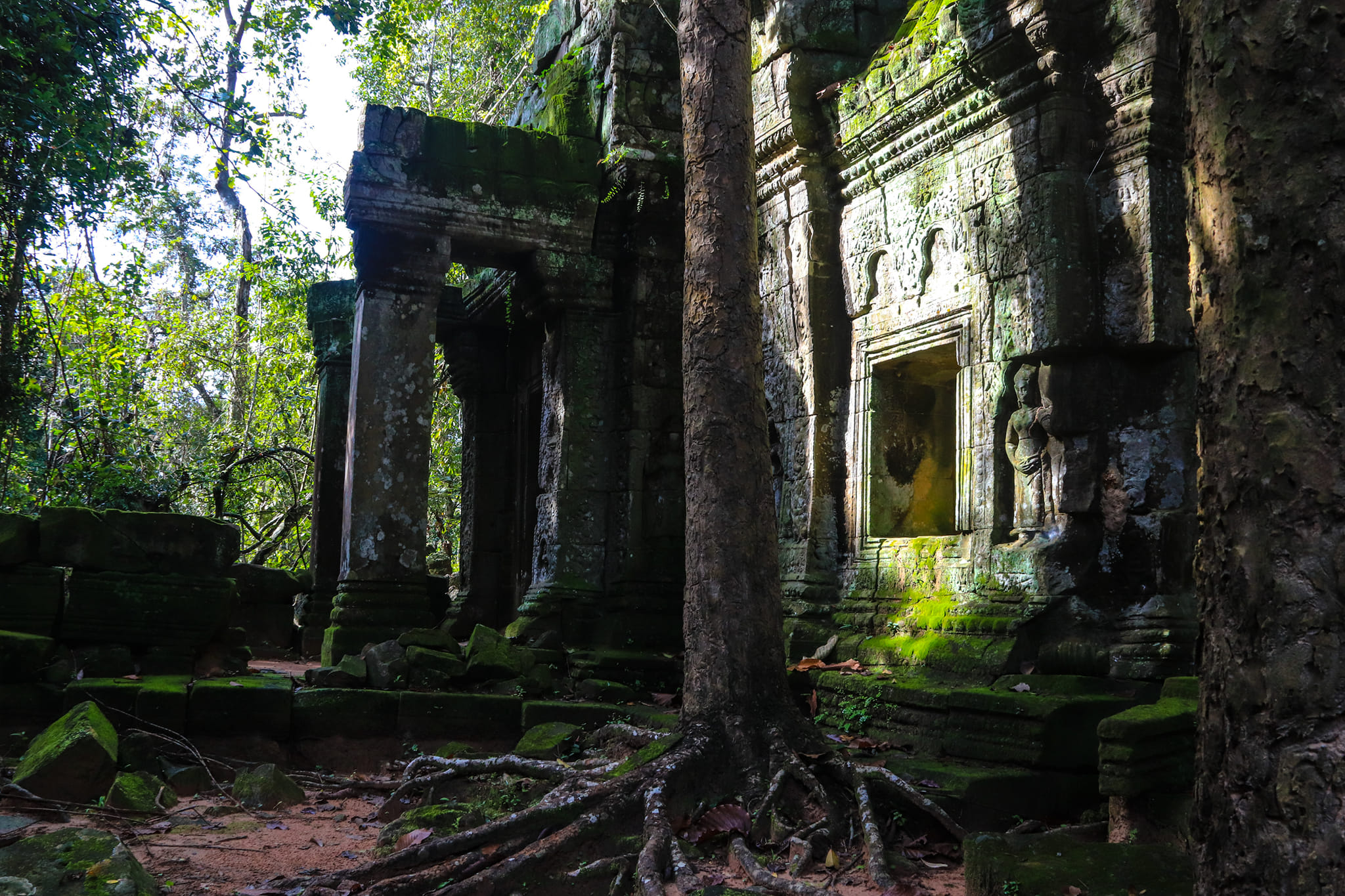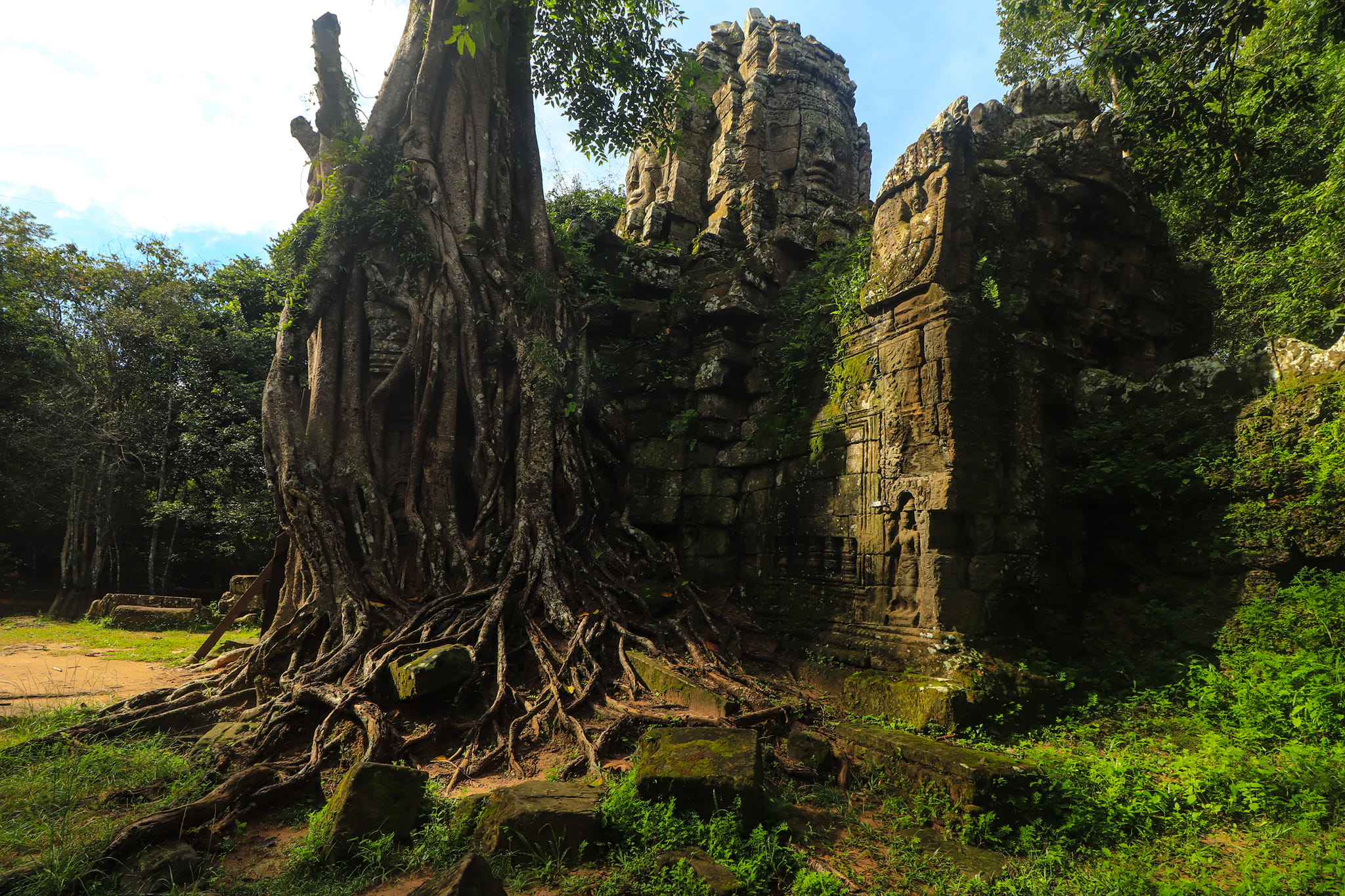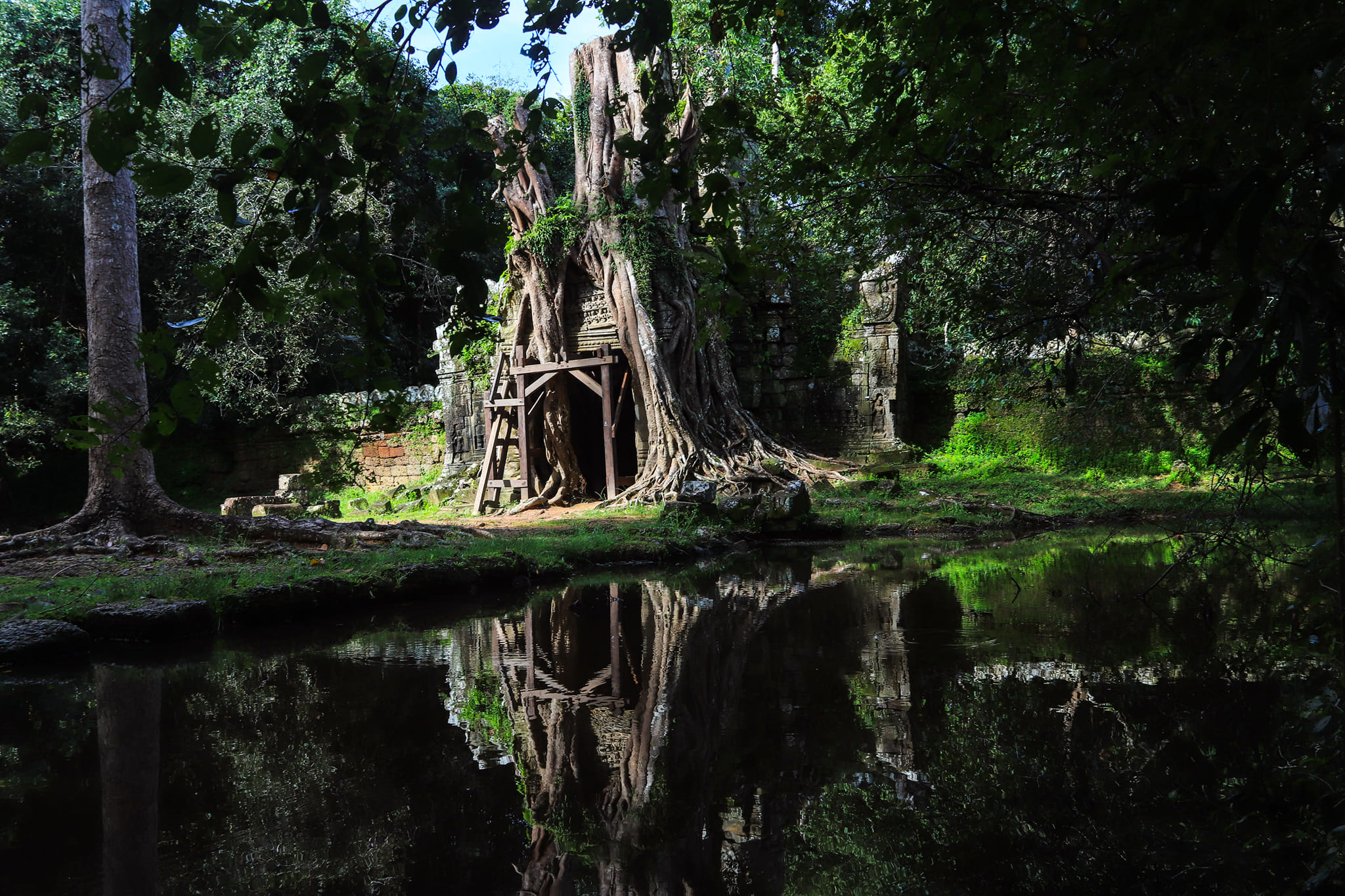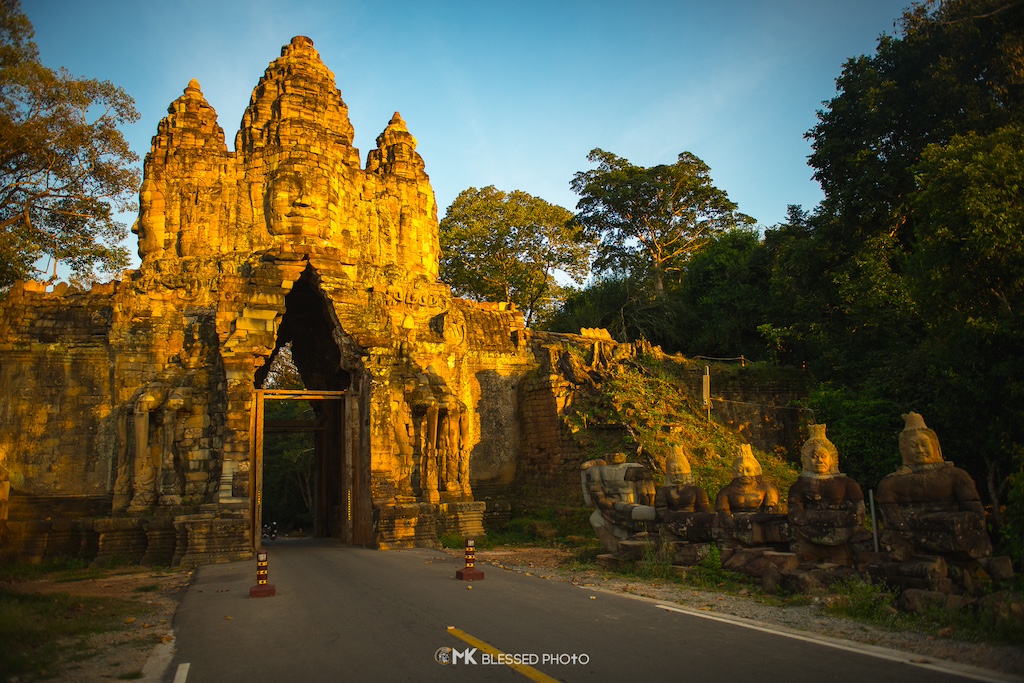(Photo by: Apsara National Authority)
Ta Som: A Hidden Gem in the Heart of Angkor's Ancient Wonders
Nestled within the majestic Angkor Archaeological Park, Ta Som offers an enchanting journey back in time. This lesser-known yet profoundly captivating temple, built at the end of the 12th century by King Jayavarman VII, is a symbol of Cambodia's rich historical tapestry.
Ta Som, primarily dedicated to the father of Jayavarman VII, stands unique for its relatively compact size and its labyrinth of corridors and courtyards. The temple is adorned with intricate carvings typical of Bayon-style architecture, featuring a mix of Hindu and Buddhist imagery that reflects the religious transition of the era.
As you wander through the corridors of Ta Som, you'll be greeted by the serene faces of Avalokiteshvara, echoing the iconic faces of the Bayon Temple. The temple's central sanctuary, a place of tranquility and reflection, invites visitors to ponder the ancient Khmer Empire's spiritual depth.
The most iconic feature of Ta Som is the eastern gopura (gateway), famously engulfed by a giant strangler fig tree. This natural wonder creates a surreal scene, where roots and ruins intertwine, symbolizing the relentless march of nature. The interplay of man-made structures and natural elements at Ta Som offers a picturesque spectacle, making it a photographer's paradise.
Despite its smaller scale, Ta Som's charm lies in its relative tranquility, away from the more frequented paths of Angkor. This hidden gem provides a more intimate and reflective experience of the Angkor temples, inviting visitors to immerse themselves in its serene ambiance and historical allure.
Major Sight Spots in Ta Som
Eastern Gopura: The iconic gateway is engulfed by a giant fig tree.
Central Sanctuary: The spiritual heart of the temple, featuring intricate carvings.
Corridor Carvings: Detailed bas-reliefs depicting mythological scenes.
Outer Enclosure: Walking the perimeter reveals hidden nooks and detailed stonework.
West Entrance: Less frequented, offering a quieter exploration path.








